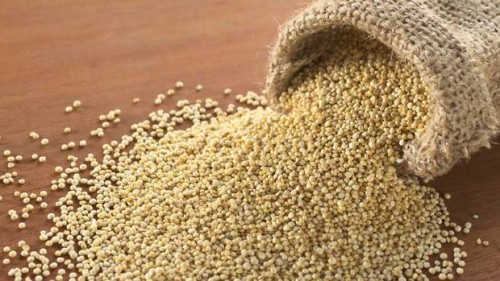Quinoa (prounounced keen-wa) was a staple food for the South American Indians living in the high altitudes of the Andes Mountains. The Incas likened to call it the “Chisaya Mama” or the “Mother of all Grains”. It was immensely popular because it was one of few crops that could survive in such high altitudes (10,000 – 20,000 feet above sea level). It could withstand frost, intense sun and the often dry conditions that characterized the Andean climate. It was also recognized for its superior nutritional qualities. For these reasons, it was dubbed “Mother of all Grains” and Quinoa came to have spiritual significance for them. Many traditions and ceremonies surrounded the cultivation, harvest and consumption of quinoa for these people. Quinoa is a “pseudo-grain”- it’s actually a gluten-free seed, but used in cooking like a whole grain. This nutrient-rich grain is a wonderful source of complete protein, providing all of…
Being Vegan and Enjoying the Whole Package Everywhere we turn, “clean eating” and “whole foods” are being touted as the newest rage in eating. Unprocessed and unrefined foods and foods that are only found in nature are the basis of clean eating. However, before the clean eating rage started, there were vegans. While vegetarians do not eat meat, fish, or poultry, vegans also do not use other animal products and by-products such as eggs, dairy, honey, leather, fur, silk, wool, cosmetics and soaps derived from animal products. A vegan’s diet includes staples of fruits, vegetables, leafy greens, whole grains, nuts, seeds, and legumes. Packing a Protein Punch When people embark on the journey of veganism, many times family and friends show concern or curiosity as to how vegans get their proteins. According to the Centers for Disease Control, most of us eat more protein than we need. Protein is in…
It’s estimated that 1 in 133 Canadians or 250,000 people have celiac disease (an it’s growing) and approximately 3 million Americans. It’s a lifelong, genetically based disorder that occurs when gluten – a protein found in wheat, rye and barley – triggers an abnormal immune response that damages the lining of the small intestine interfering with the absorption of vital nutrients. It can be painful and debilitating. Symptoms can include anemia, diarrhea, arthritis, intense abdominal pain, weight loss and, in children, delayed growth. But most people have symptoms that are subtler, such as bloating, excess gas or fatigue. People who have gluten ‘sensitivity’ will also benefit from a gluten-free diet. These people test negative for celiac disease but react poorly to gluten and may report abdominal pain, headaches, irritability, depression and chronic fatigue. There’s no evidence, however, that following a gluten-free diet will promote weight loss or offer any health…



